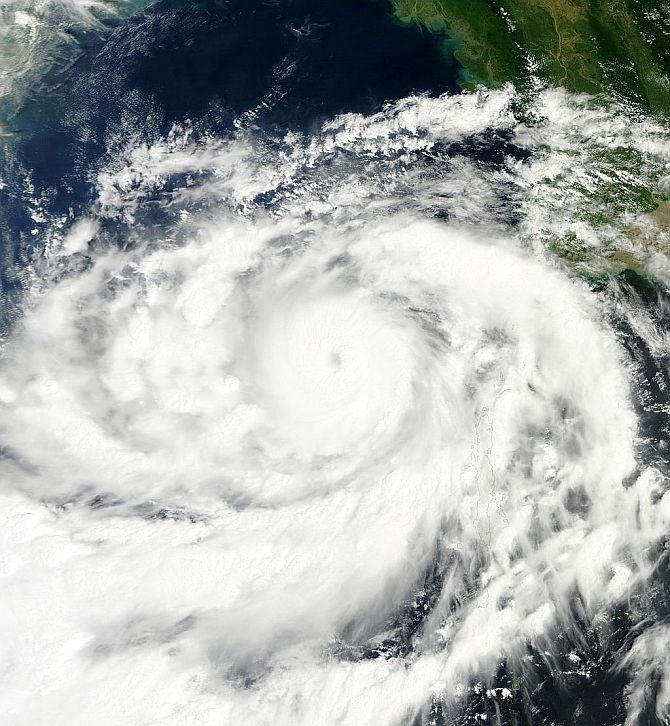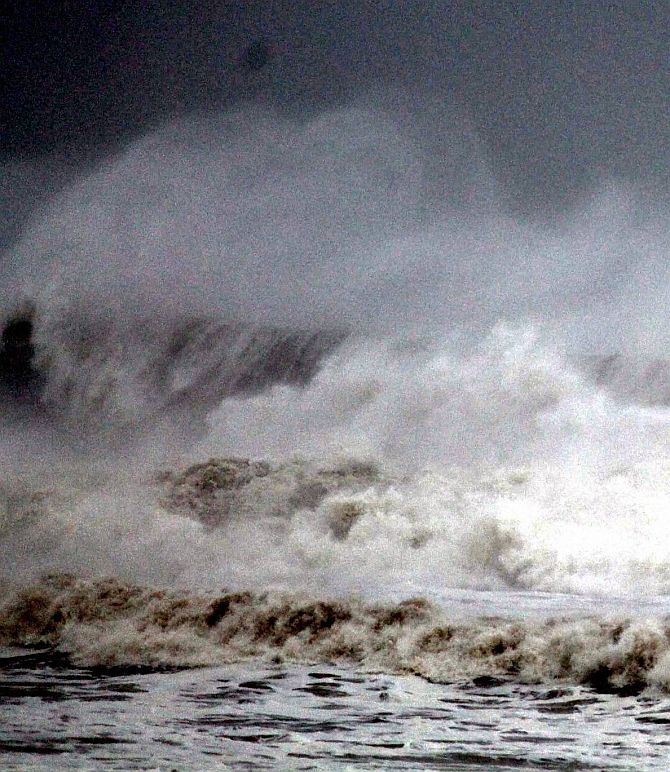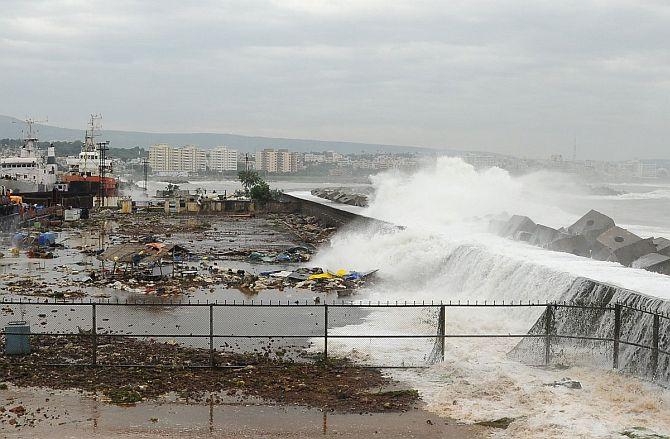 | « Back to article | Print this article |
How WE defeated cyclone Phailin and saved thousands
Massive preparedness, speedy evacuation plans and almost accurate prediction of cyclone time and path have saved the country from a natural disaster which could have taken thousands of lives.
Thanks to the forecast of Indian Meteorological Department, coordination efforts of Home Ministry, Odisha and Andhra Pradesh governments and National Disaster Management Authority, the impact of cyclone Phailin was minimum, especially in terms of casualties, along the eastern coastline which faced the nature's fury.
"Our efforts have paid off well. The cyclone impact was minimum," NDMA vice-chairman M Shasidhar Reddy said.
A super cyclone, which had hit Odisha in 1999, left close to 10,000 people dead.
This time, the government seems to have woken up well on time and successfully evacuated nearly six lakh people in Odisha and Andhra Pradesh and put them in more than 500 cyclone shelters.
The cyclone shelters constructed under the National Cyclone Risk Mitigation Project, a World Bank-assisted initiative, have two-storeyed structures and can withstand wind-speeds up to 300 kmph.
Click on NEXT to read further...
How WE defeated cyclone Phailin and saved thousands
At the landfall in Odisha's Gopalpur, cyclone Phailin was hovering around at a wind-speeds of over 200 kmph.
The government has also engaged more than 3,000 personnel of National Disaster Response Force, 2,000 personnel of Army in its evacuation plan and kept 18 helicopters, 12 aircraft and two war ships ready for rescue and relief operations.
The Doppler radar in Bhubaneswar, which gives precise coordinates in terms of geographical spread, intensity and timing of cyclones helped authorities prepared better.
This helped early warning to the disaster management authorities and wider dissemination of the cyclone information through media and timely evacuation of people.
"Our alert is almost accurate. Media has also played an important role in disseminating the cyclone warning," Director General of Indian Meteorology Department L S Rathore said.
Constant monitoring by Cabinet Secretary Ajit Seth, direct supervision in evacuation plans by Home Secretary Anil Goswami also helped in working out joint strategies to face the natural disaster.
Click on NEXT to read further...
How WE defeated cyclone Phailin and saved thousands
The National Executive Council, which was almost non-functional till the Uttarakhand rains disaster, has been reactivated.
The Home Secretary took its meetings daily to finalise coordinating mitigation and relief preparedness with various central ministries, departments, Army, Air Force, Navy, NDRF and the two state governments.
The government also could successfully store enough food items at the cyclone shelters which also gave shelters to cattle brought by the villagers along with themselves while evacuating their homes.
"The joint efforts have helped us plan well and could reduce the damage significantly," National Disaster Response Force chief Krishna Chowdhary said.


